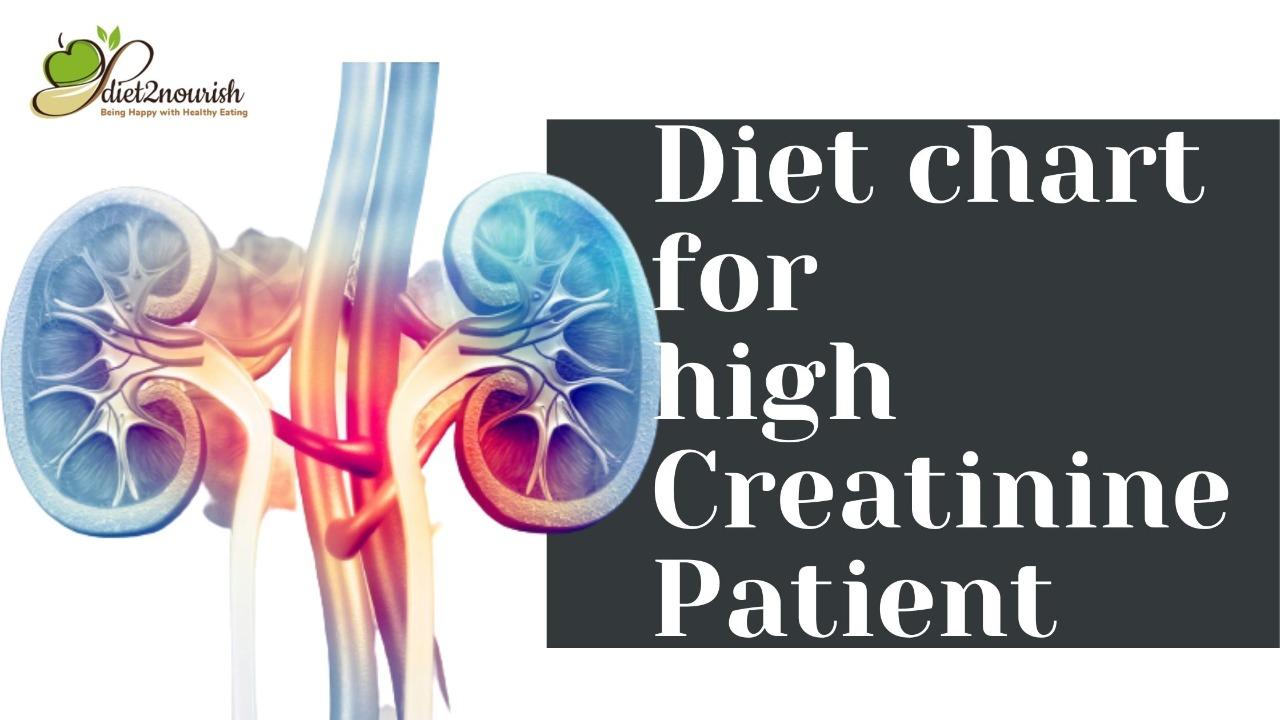A Comprehensive Diet Chart for High Creatinine Levels: Nourishing Your Kidneys for Optimal Health
High creatinine levels in the blood can be an alarming sign of kidney dysfunction. Proper nutrition plays a pivotal role in managing high creatinine levels and supporting kidney health.
Understanding High Creatinine Levels
high creatinine diet chart is a waste product produced by muscle metabolism and is primarily excreted by the kidneys. Elevated creatinine levels in the blood often indicate reduced kidney function. This reduction can result from various factors, including kidney disease, dehydration, and certain medications. Managing high creatinine levels is crucial for supporting kidney health and preventing further kidney damage.
Dietary Considerations for High Creatinine Levels
Diet plays a substantial role in managing high creatinine levels and supporting kidney function. Here are key dietary considerations for individuals with elevated creatinine:
-
Protein Intake: Reducing protein intake, especially animal protein, can help lower creatinine levels. High-protein diets can put extra strain on the kidneys.
-
Sodium Restriction: Reducing sodium (salt) intake is crucial for managing high blood pressure, which can contribute to kidney damage.
-
Potassium Control: Individuals with high creatinine levels may need to monitor their potassium intake, as elevated potassium levels can be harmful to the heart and kidneys.
-
Phosphorus Management: High phosphorus levels in the blood can be a concern for those with kidney dysfunction. Limiting phosphorus-rich foods is essential.
-
Fluid Balance: Maintaining a proper fluid balance is important. In some cases, fluid intake may need to be restricted to avoid fluid buildup in the body.
-
Balanced Diet: Consuming a balanced diet that includes a variety of nutrients is crucial for overall health and managing high creatinine levels effectively.
A Practical high creatinine diet chart
Here's a sample 7-day diet chart tailored to support individuals with high creatinine levels:
Day 1:
- Breakfast: Oatmeal with sliced bananas and a sprinkle of cinnamon.
- Mid-Morning Snack: A small handful of grapes.
- Lunch: Grilled chicken breast with steamed broccoli and brown rice.
- Afternoon Snack: Carrot and cucumber sticks with hummus.
- Dinner: Baked salmon with lemon and dill, quinoa, and sautéed spinach.
Day 2:
- Breakfast: Greek yogurt with honey and mixed berries.
- Mid-Morning Snack: A small apple with a tablespoon of almond butter.
- Lunch: Lentil soup with a side of whole-grain bread and a mixed greens salad.
- Afternoon Snack: A piece of string cheese with baby carrots.
- Dinner: Tofu stir-fry with brown rice and asparagus.
Day 3:
- Breakfast: Whole-grain toast with avocado and sliced tomatoes.
- Mid-Morning Snack: A small serving of mixed nuts.
- Lunch: Turkey and avocado wrap in a whole-grain tortilla with mixed greens.
- Afternoon Snack: Sliced cucumber and cherry tomatoes with balsamic vinaigrette.
- Dinner: Baked cod with a lemon herb sauce, quinoa, and steamed green beans.
Day 4:
- Breakfast: Scrambled eggs with spinach and bell peppers.
- Mid-Morning Snack: A small handful of blueberries.
- Lunch: Chickpea salad with diced cucumbers, cherry tomatoes, and a lemon-tahini dressing.
- Afternoon Snack: Greek yogurt with honey and a sprinkle of chia seeds.
- Dinner: Grilled shrimp with brown rice and sautéed asparagus.
Day 5:
- Breakfast: Smoothie made with spinach, banana, almond milk, and a scoop of protein powder.
- Mid-Morning Snack: A small apple with a tablespoon of peanut butter.
- Lunch: Spinach and feta-stuffed chicken breast with roasted sweet potatoes.
- Afternoon Snack: Hummus with carrot and celery sticks.
- Dinner: Baked chicken breast with rosemary, quinoa, and steamed broccoli.
Day 6:
- Breakfast: Cottage cheese with sliced peaches and a drizzle of honey.
- Mid-Morning Snack: A small serving of mixed nuts.
- Lunch: Quinoa salad with chickpeas, diced cucumbers, and a lemon vinaigrette.
- Afternoon Snack: Sliced cucumber and cherry tomatoes with balsamic vinaigrette.
- Dinner: Grilled salmon with a dill sauce, brown rice, and steamed asparagus.
Day 7:
- Breakfast: Oatmeal topped with sliced strawberries and chopped walnuts.
- Mid-Morning Snack: A piece of string cheese with baby carrots.
- Lunch: Lentil soup with mixed greens and whole-grain bread.
- Afternoon Snack: A small handful of grapes.
- Dinner: Baked tofu with teriyaki sauce, quinoa, and sautéed spinach.
Additional Tips for Managing High Creatinine Levels Through Diet:
-
Monitor Fluid Intake: Follow your healthcare provider's guidance on fluid intake. In some cases, fluid intake may need to be restricted.
-
Limit Salt: Reduce sodium intake by avoiding processed and salty foods.
-
Phosphorus Awareness: Limit high-phosphorus foods like dairy products, beans, and nuts.
-
Consult a Dietitian: Consider consulting a registered dietitian who specializes in renal nutrition for personalized guidance.
-
Medication Adherence: If prescribed medications to manage underlying kidney conditions, take them as directed by your healthcare provider.
-
Regular Monitoring: Schedule regular check-ups and kidney function tests to track your progress and adjust your diet plan as needed.
Conclusion
Managing high creatinine levels through diet is crucial for supporting kidney health and overall well-being. This diet chart provides a balanced approach to nutrition, emphasizing foods that can help lower creatinine levels and reduce strain on the kidneys. However, it's essential to consult with a healthcare provider or registered dietitian for personalized guidance, especially if you have specific dietary requirements or medical conditions. By making informed dietary choices and adopting a kidney-friendly diet, you can effectively manage high creatinine levels and promote kidney health.
